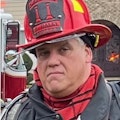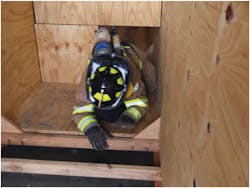The training officer plays an integral part in the success and safety of everyone in the department. However, many departments do not place enough emphasis on the role of the training officer. Continuing education is of paramount importance to today’s responder, and the training officer is responsible to make sure that all members know the responsibilities that each of them play on the emergency scene. It is a constant task that requires diligence and commitment, resulting in continued education and skills for all of the department’s members.
Serving as an instructor and training officer for many decades, I have found that there are certain points of consideration that aid the training officer in developing a successful training program for their departments. Here are a few in no specific order:
1. Do not underestimate the value of training: Many different professions are able to practice their crafts each day just in the performance of their daily responsibilities; we are not fighting fires every day we show up to work. We are not stretching hoses, cutting cars, tying knots or throwing ladders every time the bell goes off. So when the opportunity comes to train, it is not to be taken lightly; capitalize on the time spent to hone your department’s skills.
2. Do not forget the basics: Over the last two decades, the fire department has become a provider for more services than just fighting fires. But, the numbers still confirm that an overwhelming amount of our responses are for reports of fires. So while your department may provide a broad array of services to the community, remember that your primary responsibilities are fire prevention, education and suppression. That means training on the tasks that we take for granted, like personal protective equipment (PPE) usage, donning self-contained breathing apparatus (SCBA) and tool maintenance (see Photo 1). While they may not be as glorifying as other topics, these still need to be addressed.
3. Train as you respond: To handle the training officer’s job correctly, that means taking a hands-on approach along with the students. Be sure to dress for the part; whatever is required to safely perform the training evolution, be sure to set a positive example and dress appropriately. Your students will follow your lead.
4. Practice Transformational Leadership: The training officer must view the operations of the department from within a position of “Self-Realization”; in other words, where does the department excel? Where does it fall short? What skills seem to be weakest during department operations? Defining the vision of where the department functional level should be will identify areas that should serve as the primary focus points for the department’s training schedule (see Photo 2).
5. Know your topic: Standing in front of a room full of your peers demonstrates “power” so to speak: Expert Power and Information Power. Expert Power is directly correlated to the instructor’s perceived knowledge and skills, and is what draws the learner into the class. That knowledge is what provides the Information Power. It takes only mere seconds to erase a career’s worth of credibility. Moreover, much of our hands-on training can place the member in a significant amount of risk. Trying to pass off information that is incorrect will destroy any integrity the instructor had prior to the start of the lesson, and could lead to significant injury and liability. Remember, you may fool the spectators, but you will not fool the players.
6. Invest in proper preparation: Make it a point to be familiar with the area that the training will take place in; control the lights, adjust room temperature and block out any distractions that may interrupt the session. Make sure that all of the audio/visual aids are in working order and are compatible with the technology that the program is supported by. Become well-versed in the topic to be discussed; that means looking at the lesson plan prior to the session for as long as it takes to be able to speak on the topic without reading from the slides (see Photo 3).
7. Create S.M.A.R.T. objectives: When utilizing support material within the training session, it should be utilized in a manner that completes the desired objectives. This starts with determining the objectives for the course, and each objective should be:
Specific
Measurable
Action-oriented
Realistic
Time-driven
8. Emphasize team building and efficiency: In his book, Engineering Practical Rope Rescue Systems, author Mike Brown talks about stressing the “Team Efficiency Concept” during his training classes. Simply put, it is the refining of members skills and actions on the incident to maximize efficiency and reduce waste. There are very few operations in the fire service that do not depend on the actions of the entire team. Therefore, it is highly advisable to enforce the team approach during the session.
9. Train in all response competencies: Introductory training on specific tools and techniques are a requirement for new members, but continuing education should involve multiple competencies that would be performed at an incident. For example, hose drills to above-grade floors can include rope training to hoist up equipment; annual SCBA training can include unit maintenance and proper search techniques; ladder raises can support Vent-Enter-Search (VES) training, etc…. When the member sees the actual task implemented into the action plan, a better understanding of the importance of teamwork is the result (see Photo 4).
10. Document, Document, Document: Our litigious society has placed emphasis on documentation for our departments operations. Training records are such documents that need to be stored. Options exist for electronic storage within many National Fire Incident Reporting System (NFIRS) programs. These programs should be easily navigated to draw upon the required information when needed. Many insurance companies are requiring formal documented proof that the members are being trained correctly to avoid any liability, and these programs may be called upon should any legal actions arise.
Conclusion
The position of Training Officer is not one to be taken lightly. This position is charged with the responsibility of creating a thorough, efficient department-wide program that encompasses all aspects of the department’s mission statement. The position requires a person of high-energy, self-confidence, integrity and intelligence in order to influence the learning process on a wide variation of learners. The end result will confirm the department’s mission statement: the safe and efficient performance of its members during each and every operation…exactly what our customers deserve.
Until next time, stay focused and stay safe.
- See Mike Live! Lt. Michael Daley will be presenting “Basement Fires” and “Strategies and Tactics for Fires in Attics and Cocklofts” at Firehouse Expo in Baltimore, July 23 - 27.
MICHAEL P. DALEY is a lieutenant and training officer with the Monroe Township, NJ, Fire District No. 3, and is an instructor with the Middlesex County Fire Academy, where he is responsible for rescue training curriculum development. Mike has an extensive background in fire service operations and holds degrees in business management and public safety administration. He was named a Master Fire Instructor from the International Society of Fire Service Instructors. Mike serves as a rescue officer with the New Jersey Urban Search and Rescue Task Force 1 and is a managing member for Fire Service Performance Concepts, a consultant group that provides assistance and support to fire departments with their training programs and course development. You can reach Michael by e-mail at:[email protected].
About the Author

Michael Daley
MICHAEL DALEY, who is a Firehouse contributing editor, recently retired as a 37-year veteran who served as a captain and department training officer in Monroe Township, NJ. He is a staff instructor at multiple New Jersey fire academies and is an adjunct professor in the Fire Science Program at Middlesex County College. Daley is a nationally known instructor who has presented at multiple conferences, including Firehouse Expo and Firehouse World. His education includes accreditations as a Chief Training Officer and a Fire Investigator, and he completed the Craftsman Level of education with Project Kill the Flashover. Daley is a member of the Institution of Fire Engineers and a FEMA Instructor and Rescue Officer with NJ Urban Search and Rescue Task Force 1. He operates Fire Service Performance Concepts, which is a training and research firm that delivers and develops training courses in many fire service competencies.
